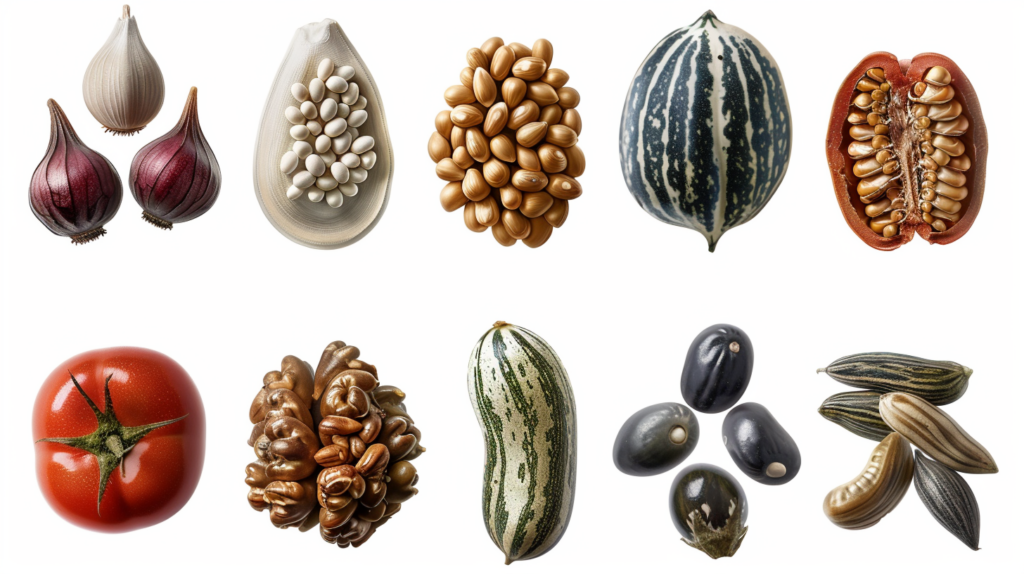Introduction
As an avid gardener, the allure of cultivating my own fresh produce indoors, liberated from the whims of weather and seasons, has always captivated me. The advent of hydroponic cultivation, which allows plants to thrive in a nutrient-rich water solution rather than soil, has unveiled a plethora of opportunities for enthusiasts of indoor gardening like myself.
In this article, I will navigate you through the five pivotal steps to cultivate broccoli hydroponically with success, enabling you to reap a generous harvest of this nutrient-packed vegetable within the comfort of your home or indoor garden. From choosing the ideal hydroponic system to perfecting the technique of nutrient management, I am excited to impart essential insights that will elevate your indoor gardening prowess in 2024.
The Advantages of Hydroponic Broccoli Cultivation
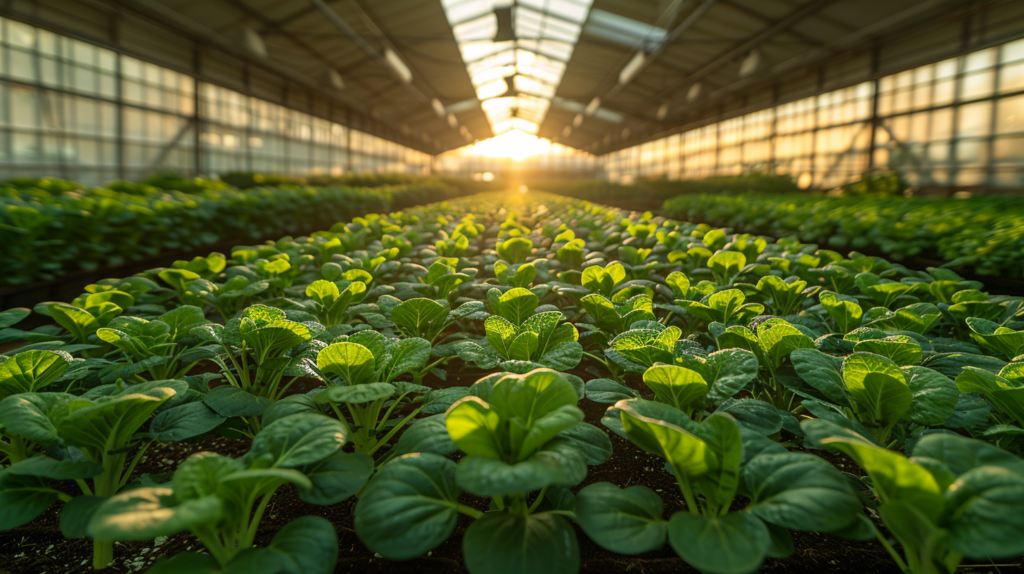
Embracing hydroponic methods for growing broccoli presents a wealth of advantages that appeal to indoor gardening aficionados. The capability for all-season cultivation inherent in hydroponic systems guarantees a steady stream of fresh broccoli, independent of external weather fluctuations. This feature is especially beneficial for residents in areas plagued by extreme weather or short growing periods.
Hydroponic systems also excel in resource efficiency, utilizing a closed-loop system that curtails water waste and allows for meticulous nutrient level management. This precision not only saves water and nutrients but also fosters accelerated plant growth and augmented yields when juxtaposed with traditional soil farming. A notable advantage of hydroponic broccoli farming is the diminished threat of soil-borne pests and diseases. The absence of soil negates the risk of soil-related pathogens, leading to more robust plant health and less reliance on pesticides or chemical interventions.
Moreover, hydroponic setups grant enhanced control over the growth environment, empowering gardeners to fine-tune conditions like temperature, humidity, and lighting. Such meticulous environmental regulation paves the way for superior quality broccoli and the possibility of greater harvests. Lastly, the compact nature of hydroponic systems is ideal for urban dwellers or those with space constraints. Employing vertical growing strategies can significantly amplify space utilization, enabling the production of abundant broccoli yields in confined spaces.
Step-by-Step Guide to Mastering Hydroponic Broccoli Growth
Embarking on a journey to master hydroponic broccoli growth involves a detailed five-step strategy. Initially, we’ll navigate through the assortment of hydroponic systems, assisting you in pinpointing the perfect fit for your gardening ambitions.
Following this, we’ll delve into the creation of an optimal growth habitat, emphasizing key elements such as lighting, temperature, humidity, and ventilation. Progressing further, the selection of a broccoli variety specifically suited for hydroponic growth comes next, with a focus on growth patterns and resistance to diseases. Subsequently, we’ll examine the nuances of nutrient management, highlighting the importance of vital nutrients, concocting the ideal nutrient solution, and establishing a consistent feeding regimen.
Culminating our guide, we’ll delve into the practical aspects of planting, upkeep, and harvesting. This includes everything from the germination and transplantation of seedlings, through the vigilant monitoring of pH and EC values, to tackling prevalent challenges and perfecting harvesting methods. Armed with this comprehensive knowledge, you’ll be well-prepared to achieve an abundant harvest of hydroponically grown broccoli.
Step 1: Selecting the Ideal Hydroponic System

Choosing the appropriate hydroponic system is a pivotal step in ensuring the success of your broccoli growing endeavor. Each hydroponic system presents its own set of benefits and factors to consider, making it vital to assess your individual needs and gardening goals prior to making a decision. In this segment, we will delve into three widely embraced hydroponic systems, highlighting key considerations to aid you in identifying the system that best aligns with your indoor gardening requirements.
Exploring the Deep Water Culture (DWC) System
The Deep Water Culture (DWC) system stands out as a straightforward yet efficient approach to hydroponic broccoli cultivation. Within this setup, broccoli roots are immersed in a solution rich in nutrients, while continuous aeration ensures they receive ample oxygen. Renowned for its simplicity and minimal upkeep, the DWC system serves as an ideal option for novices or those constrained by time or resources. A significant benefit of employing the DWC system is its facilitation of swift plant growth and enhanced yields. Uninterrupted access to nutrients and oxygen fosters robust root growth, which in turn cultivates healthier plants and more substantial broccoli heads.
Moreover, the design of the DWC system simplifies the process of monitoring and adjusting nutrient concentrations, promoting optimal growth conditions. Nonetheless, it is essential to acknowledge that the DWC system necessitates a dependable air pump and vigilant oversight of water and nutrient levels. Diligent maintenance and adjustments are imperative to avert complications such as root rot or nutrient imbalances, which could detrimentally affect plant health and productivity.
Understanding the Nutrient Film Technique (NFT) System
The Nutrient Film Technique (NFT) system represents an advanced and efficient approach to hydroponics, characterized by a perpetual flow of a nutrient-dense solution across the roots of the plants. In this innovative system, plants are positioned within grow channels or tubes, allowing their roots to interact with a slender layer of nutrient solution that is in constant motion.
A standout feature of the NFT system is its remarkable efficiency in water and nutrient usage. The unceasing circulation of the nutrient solution guarantees a steady nutrient supply to the plants, concurrently reducing water wastage. This system is exceptionally conducive to the cultivation of leafy vegetables such as broccoli, encouraging swift plant growth and substantial yields. Nevertheless, the NFT system demands meticulous monitoring and upkeep. Any interruption in the nutrient solution’s flow can rapidly result in root desiccation and subsequent plant stress.
Moreover, due to its design, the system is prone to experiencing clogs or obstructions, potentially disrupting the nutrient and water distribution. For thriving broccoli cultivation utilizing the NFT system, it is crucial to ensure an unvarying flow rate, conduct routine inspections for any signs of clogs or blockages, and meticulously manage the nutrient solution’s pH and electrical conductivity (EC) levels.
Delving into the Ebb and Flow System
The Ebb and Flow system, interchangeably known as the Flood and Drain system, strikes a harmonious chord between straightforwardness and operational efficacy as a hydroponic technique. Within this system, plants’ roots are nestled in a grow tray or basin, which is filled with an inert substrate such as perlite or coco coir. The nutrient-rich solution is intermittently pumped into the grow tray to immerse the roots, and subsequently, it is drained back to a holding tank. A prominent benefit of the Ebb and Flow system is its dual provision of oxygen and moisture to the roots, fostering robust growth and mitigating the likelihood of root rot. This system is aptly suited for cultivating larger plants, including broccoli, due to its support for extensive root growth and efficient nutrient absorption.
Moreover, the Ebb and Flow system is known for its relatively low upkeep demands. The cyclical nature of the flooding and draining helps to avert the accumulation of salts and impurities, thereby lessening the frequency of nutrient solution replacements. Nonetheless, vigilant oversight of the flood and drain intervals is critical to ensure that the roots are adequately hydrated and nourished without being subjected to waterlogging or nutrient scarcity. As the plants mature and their hydration and nutritional needs evolve, precise timing and modifications to the cycles may be required.
Key Considerations for Choosing a Hydroponic System
In the process of selecting an appropriate hydroponic system for growing broccoli, several critical factors must be weighed, including the space you have at your disposal, your budgetary constraints, and your personal inclinations. For individuals with limited indoor space, compact options such as the Deep Water Culture (DWC) or Nutrient Film Technique (NFT) systems might prove to be the most suitable choices.
Conversely, for those with more room, the Ebb and Flow system offers the capacity to support a larger number of plants. It’s also important to assess the degree of maintenance and oversight each system demands, alongside their potential for growth or scalability to match your evolving gardening aspirations. The ideal hydroponic system for you should not only accommodate your specific objectives and resources but also your dedication to fostering a fruitful and gratifying broccoli growing venture.
Step 2: Crafting the Ideal Growth Environment
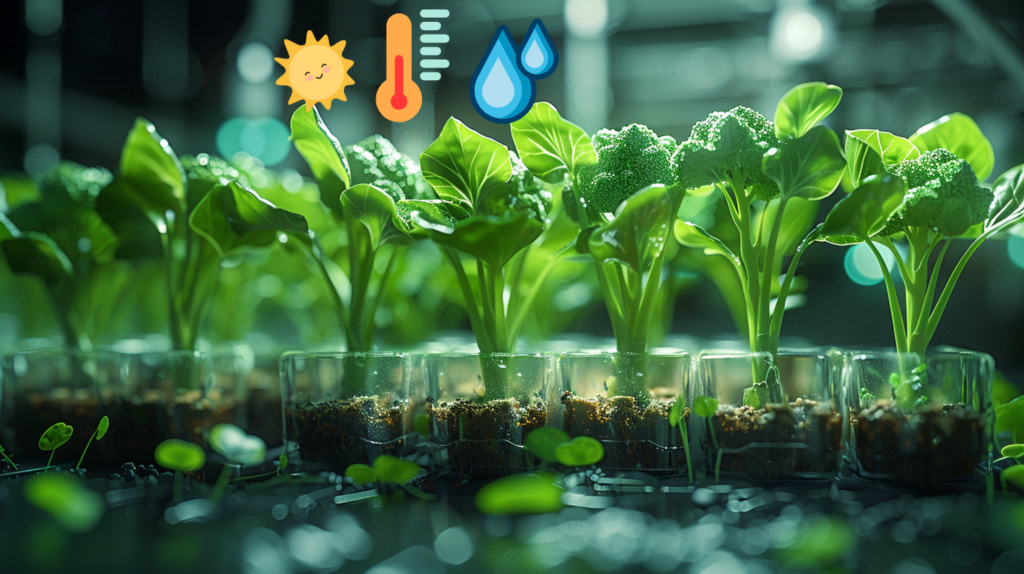
Establishing the perfect growth environment is a cornerstone of thriving hydroponic broccoli growth. This phase delves into the essential elements that forge a prosperous indoor garden, such as the specifics of lighting, the management of temperature and humidity, and the importance of ensuring adequate air flow and ventilation. By meticulously adjusting these environmental parameters, you can create the optimal conditions that broccoli plants need to flourish, leading to enhanced growth and increased yields.
Optimizing Lighting for Broccoli Growth
Securing the right lighting setup is a pivotal aspect of nurturing hydroponic broccoli, as it profoundly influences the plant’s development, vitality, and yield. Broccoli demands a substantial quantity of light, ideally sourced from a full-spectrum lighting solution that closely replicates the sun’s natural rays. To thrive, broccoli should bask in 14 to 16 hours of light daily during its vegetative phase and require 12 to 14 hours as it transitions into the flowering and head formation stages. Employing LED grow lights or high-intensity discharge (HID) lamps, including metal halide or high-pressure sodium options, can effectively meet the plant’s needs for intense light and appropriate spectral quality. It’s crucial to achieve a light intensity ranging from 300 to 500 foot-candles (3,200 to 5,400 lux) at the canopy level of the plants.
Additionally, the positioning of the lights relative to the plants and the capacity for light to be reflected or absorbed in your grow area must be carefully considered. Properly managing light distribution and placement is essential to foster uniform growth and avert issues like stretching, which stem from insufficient lighting.
Regulating Temperature and Humidity for Broccoli
For hydroponic broccoli to flourish, it’s imperative to sustain the right temperature and humidity conditions. Broccoli fares best when grown in daytime temperatures ranging from 65°F to 75°F (18°C to 24°C), with a slight dip in the thermometer readings during nighttime. To avert complications such as mold proliferation or transpiration challenges, humidity should be consistently regulated within the 50% to 70% range.
Equipping your indoor garden with a dependable system to monitor temperature and humidity, complemented by suitable heating, cooling, and dehumidifying apparatus, is key to providing your broccoli with a stable and conducive environment for growth.
Enhancing Air Flow and Ventilation
Ensuring robust air circulation and ventilation is crucial for fostering a salubrious environment conducive to hydroponic broccoli growth. Optimal air movement mitigates the formation of stagnant air zones, diminishes the likelihood of mold and pathogen development, and facilitates a uniform distribution of both temperature and humidity across the cultivation space.
To achieve this, incorporating oscillating fans or establishing an exhaust mechanism can be effective in promoting air flow and refreshing the indoor air with external sources. Moreover, it’s essential to guarantee that the grow area is well-ventilated, allowing for the expulsion of surplus heat, moisture, and any noxious gases. This approach aids in establishing an ideal microclimate that enables broccoli plants to prosper.
Step 3: Selecting the Ideal Broccoli Variety
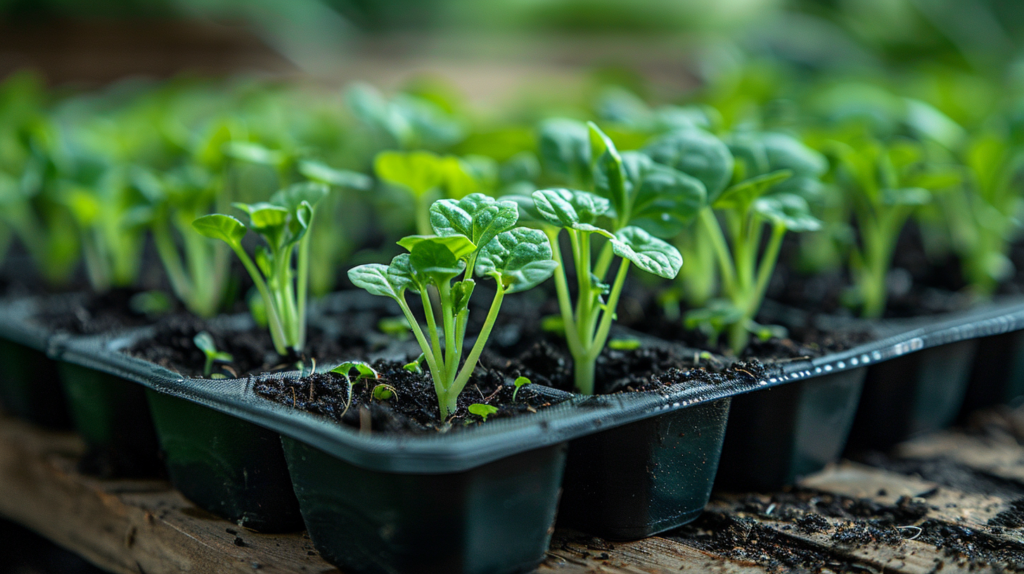
Choosing the appropriate broccoli variety is a pivotal element in the success of hydroponic cultivation. Each variety possesses distinct traits that may affect their adaptability and productivity within a hydroponic setup. During this stage, we will examine the recommended varieties of broccoli and discuss the considerations to keep in mind while making your selection. This ensures that you begin your hydroponic journey with the strongest foundation for yielding an abundant harvest.
Optimal Broccoli Varieties for Hydroponic Cultivation
Within the realm of hydroponic broccoli cultivation, certain varieties stand out for their suitability in indoor growing environments. ‘Packman’, a hybrid variety, is often recommended due to its compact growth pattern and superior head formation. This variety also boasts resistance to many of the common diseases that afflict broccoli, making it a steadfast option for hydroponic gardens.
‘Gypsy’ is another favored variety, lauded for its tolerance to heat, its ability to produce sizable, dense heads, and its adaptability to a broad spectrum of growing conditions. Not only does ‘Gypsy’ offer a delightful taste, but it also provides a prolonged harvesting period, which is advantageous for both commercial and residential cultivators. For those in pursuit of a variety with a touch of uniqueness, ‘Romanesco’ presents an eye-catching spiral design and a rich, nutty flavor. Although ‘Romanesco’ might demand a bit more care compared to conventional broccoli types, it can be a gratifying selection for hydroponic growth, adding both aesthetic and gustatory appeal to your indoor garden.
When choosing a broccoli variety, it’s critical to take into account aspects such as the rate of growth, the size of the head, and resistance to disease, to ensure a good fit with your hydroponic setup and growing conditions.
Key Considerations for Choosing a Broccoli Variety
In the quest to select the perfect broccoli variety for hydroponic cultivation, several critical factors should be taken into account. These include the duration of the growth cycle, your preferences regarding head size, and the variety’s resistance to diseases. If your goal is to achieve quick harvests or if you’re working with limited space, varieties that feature a shorter growth cycle may be more suitable. It’s also important to consider the size of the heads produced by different varieties, as some may yield larger or more compact heads than others. Choosing varieties known for their disease resistance is crucial for reducing the risk of problems within your controlled growing environment.
Other considerations should encompass the variety’s tolerance to heat, its flavor profile, and how well it matches your specific hydroponic setup and growing conditions. A comprehensive understanding of each variety’s distinct traits is essential for a fruitful and satisfying hydroponic broccoli cultivation experience.
Step 4: Managing Nutrient Solutions and Scheduling Feeds
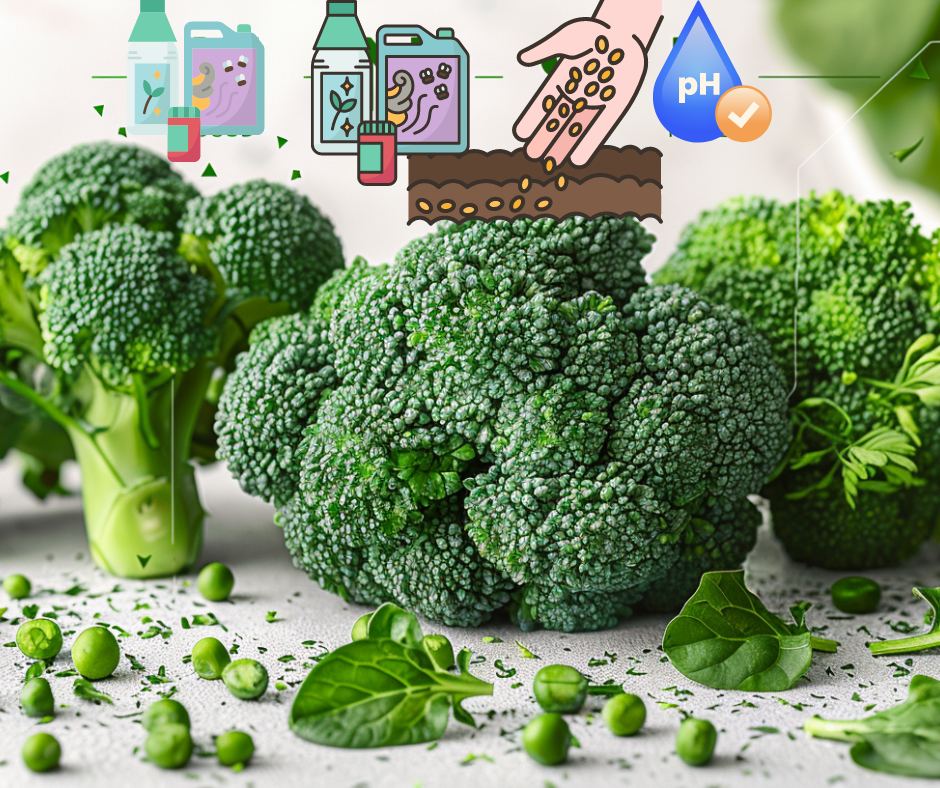
Effective nutrient management forms the backbone of thriving hydroponic broccoli growth. This phase delves into the vital nutrients necessary for broccoli to flourish, strategies for concocting and upholding a harmonious nutrient mixture, and the implementation of feeding timetables designed to furnish your plants with essential nutrients precisely when they need them. This ensures the achievement of the highest possible yield and the finest quality of your broccoli harvest.
Nutritional Requirements for Hydroponic Broccoli
To flourish within a hydroponic setup, broccoli demands a comprehensive mix of essential nutrients. The cornerstone of broccoli’s nutritional needs encompasses the primary macronutrients: nitrogen (N), for fostering leaf and stem growth; phosphorus (P), which aids in root development and the transfer of energy; and potassium (K), essential for water balance, disease resistance, and plant hardiness.
Beyond these macronutrients, broccoli’s health is further supported by a suite of micronutrients, including but not limited to calcium, magnesium, sulfur, iron, boron, zinc, and manganese. These play pivotal roles in plant functions such as enzyme activation, chlorophyll synthesis, and the efficient absorption of nutrients. Achieving and maintaining an optimal nutrient balance within your hydroponic solution is imperative, as any imbalance can result in growth impediments, discoloration, and additional complications.
Diligent observation and calibration of nutrient concentrations, tailored to the developmental phase and unique needs of your broccoli plants, are key to cultivating a prosperous and plentiful harvest.
Formulating and Sustaining the Nutrient Solution
The creation and upkeep of a well-balanced nutrient solution are fundamental to the success of hydroponic broccoli growth. Begin with a premium hydroponic nutrient blend that is tailored for leafy greens and vegetables. Adhere strictly to the manufacturer’s guidelines when combining the nutrients with purified, pH-neutral water to concoct your nutrient mixture. It’s imperative to consistently check and modify the pH and electrical conductivity (EC) of your nutrient solution to keep them within the ideal parameters for broccoli cultivation.
Typically, a pH range of 5.8 to 6.5 and an EC level of 1.2 to 2.0 mS/cm are advisable. Periodic replenishment of the nutrient solution is also essential, as plants may consume certain nutrients more rapidly than others. Establishing a routine for changing the nutrient solution or employing a continuous flow system can help ensure a steady provision of fresh nutrients. Stay alert for any indicators of nutrient imbalances, such as leaf discoloration or inhibited growth, and adjust your nutrient solution accordingly. A consistent and balanced nutrient regimen is vital for nurturing robust plant development and achieving the maximum yield of your broccoli plants.
Optimizing the Feeding Schedule and Nutrient Adjustments
Developing a precise feeding schedule and executing timely nutrient adjustments are key to fostering the best possible growth of broccoli in a hydroponic setup. In the initial seedling and early vegetative phases, it’s important to offer a nutrient solution that is less concentrated to avoid potential root burn or growth retardation. As the broccoli plants progress in their growth cycle, incrementally enhance the strength of the nutrient solution to adequately cater to their increased nutritional needs.
When the plants enter the flowering and head formation phases, sustain a heightened nutrient concentration to facilitate the production of large, robust broccoli heads. It’s essential to continuously observe the growth of the plants and tailor the feeding regimen and nutrient concentrations as needed, ensuring the broccoli receives the precise nutrients at the most opportune times.
Step 5: Implementation, Care, and Harvest
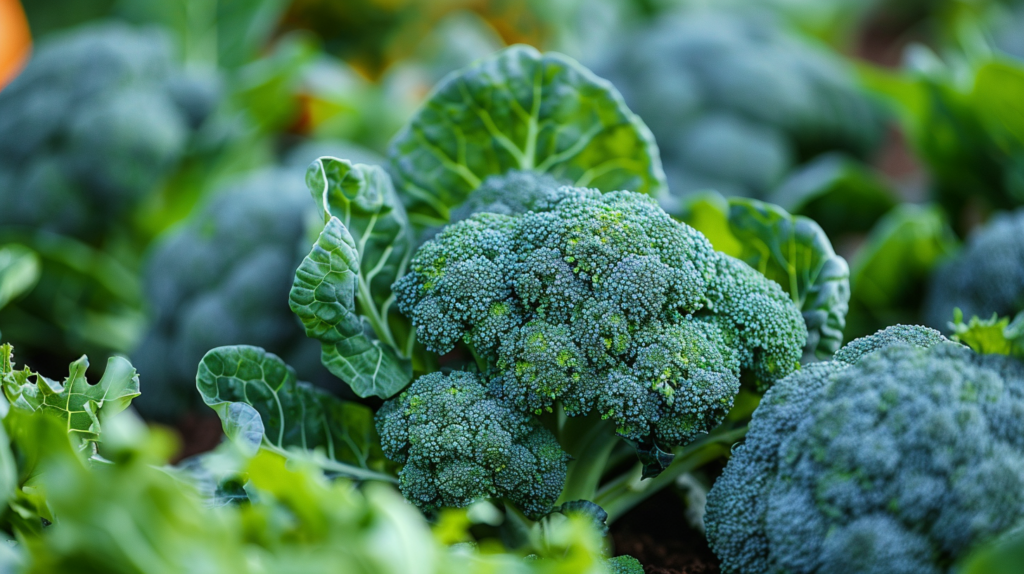
This concluding phase in the hydroponic broccoli growing process encompasses the practical tasks of planting, tending to, and harvesting your plants. We will delve into vital practices for seed germination and seedling transplantation, the vigilant monitoring and modification of essential growth factors, tackling prevalent challenges, and applying the most effective harvesting techniques. These steps are designed to optimize your crop’s productivity and secure a plentiful harvest.
Initiating Broccoli Seedlings for Hydroponics
Employing the right germination and transplantation methods is essential for laying a robust groundwork for your hydroponic broccoli plants. Begin the process by germinating the broccoli seeds in either a sterile seed-starting mixture or rockwool cubes, ensuring they receive steady moisture and warmth.
After the seedlings sprout their first true leaves, transition them into your hydroponic setup with utmost care to avoid harming their fragile roots. Start acclimating the seedlings to the nutrient solution with a diluted concentration, incrementally increasing its strength as they grow. Ensure they have sufficient light and the environmental conditions are kept ideal to foster vigorous growth and development.
Regulating pH and EC Levels for Optimal Growth
For a thriving hydroponic broccoli garden, it’s imperative to keep a close eye on and adjust the pH and electrical conductivity (EC) levels. The pH level is a critical indicator of the nutrient solution’s acidity or alkalinity, whereas the EC level reflects the nutrient concentration. Utilize dependable meters or testing kits to frequently check the pH and EC levels in your nutrient solution.
Broccoli thrives when the pH is kept within a 5.8 to 6.5 range and the EC level is maintained between 1.2 and 2.0 mS/cm. Make adjustments as necessary, considering the specific growth phase and needs of your plants. To correct any deviations from the optimal pH range, employ pH adjusters like phosphoric acid or potassium hydroxide to restore equilibrium. Incorrect pH levels can obstruct nutrient absorption, causing nutrient deficiencies or toxicities.
Likewise, keep the EC level in check to ensure your plants are neither underfed nor overfed. An EC level below the desired range could signal insufficient nutrients, while a too high EC might cause nutrient burn or salt accumulation. Periodic system flushes with clean water are beneficial in preventing salt buildup and keeping the nutrient solution well-balanced.
Managing Common Challenges in Hydroponic Broccoli Gardens
Effectively managing common challenges is essential to sustain a healthy and fruitful hydroponic broccoli garden. Nutrient deficiencies are a frequent concern, often presenting as discolored or underdeveloped leaves, which signal the need for specific nutrients.
By consistently observing plant development and fine-tuning the nutrient mix, you can avert and remedy these deficiencies. Pests, including aphids, whiteflies, and spider mites, pose another threat to hydroponic broccoli. Employing integrated pest management techniques, such as introducing beneficial insects, applying insecticidal soaps, or using horticultural oils, can effectively mitigate pest issues while preserving plant health. Additionally, root rot, typically resulting from excessive watering or inadequate drainage, is a potential problem. Ensuring proper ventilation, monitoring hydration levels, and maintaining sufficient oxygenation in the nutrient solution are key preventive measures.
Be alert for disease symptoms like wilting, discoloration, or lesions on foliage or stems. Upholding stringent sanitation standards, implementing quarantine measures, and opting for disease-resistant plant varieties can significantly reduce the incidence of diseases. Diligent plant inspection and prompt issue resolution are vital practices to maintain the well-being and productivity of your hydroponic broccoli crop.
Maximizing Broccoli Yield with Effective Harvesting Practices
Implementing the right harvesting practices is key to maximizing yields from your hydroponic broccoli garden. The prime time to harvest broccoli heads is when they are dense, firm, and exhibit a rich green hue. Utilize a sharp knife or pruning shears to sever the main head, ensuring to leave an approximate 6-inch stem on the plant, which will stimulate the production of additional side shoots for subsequent harvests.
Handle the harvested broccoli with care to prevent any bruising or damage. To maintain a steady supply, consider a staggered planting approach and consistently harvest mature heads to encourage the growth of new ones. Adhering to these harvesting practices will help you secure a plentiful and superior quality broccoli yield.
Wrapping Up
To wrap up, the journey to cultivating broccoli hydroponically is one that demands a methodical approach and meticulous attention. Adhering to the five critical steps we’ve discussed – choosing an appropriate hydroponic system, creating the perfect growing conditions, selecting the right variety of broccoli, mastering nutrient solution management, and implementing effective planting, upkeep, and harvesting strategies – will pave the way for a flourishing and productive indoor broccoli garden.
Summary of Key Steps for Thriving Hydroponic Broccoli
Let’s summarize the pivotal steps to ensure a thriving hydroponic broccoli garden:
1. Selecting an Ideal Hydroponic System: Assess systems such as Deep Water Culture, Nutrient Film Technique, and Ebb and Flow, considering your available space, budget, and personal preferences.
2. Optimizing the Growth Environment: Ensure the provision of ideal lighting, temperature, humidity, and air flow to support broccoli development.
3. Picking the Suitable Broccoli Variety: Opt for hydroponically-friendly varieties, taking into account their growth cycle, preferred head size, and resistance to diseases.
4. Managing the Nutrient Solution and Feeding: Keep the nutrient solution balanced and tailor feeding schedules to the developmental stages of the plant.
5. Execution of Planting, Upkeep, and Harvesting: Employ effective methods for seed germination, transplantation, pH and EC level management, problem-solving, and harvesting to enhance yield.
Take the Leap into Indoor Broccoli Gardening
Armed with the insights and methods outlined in this guide, you’re well-equipped to begin the rewarding adventure of cultivating broccoli indoors. Seize the moment and initiate your journey toward a sustainable and gratifying gardening endeavor. Envision the delight of gathering fresh, nutrient-packed broccoli directly from your indoor garden, independent of seasonal or external environmental limitations.
Seize this chance to cultivate your own produce, diminish your ecological impact, and savor the unparalleled taste of freshly harvested greens. Set the wheels in motion for your hydroponic broccoli garden now, and open the door to a world brimming with opportunities for a more healthful and self-reliant way of life.



